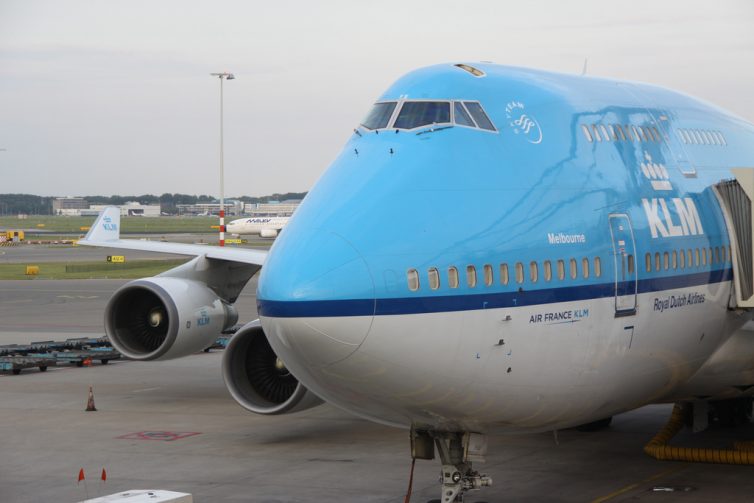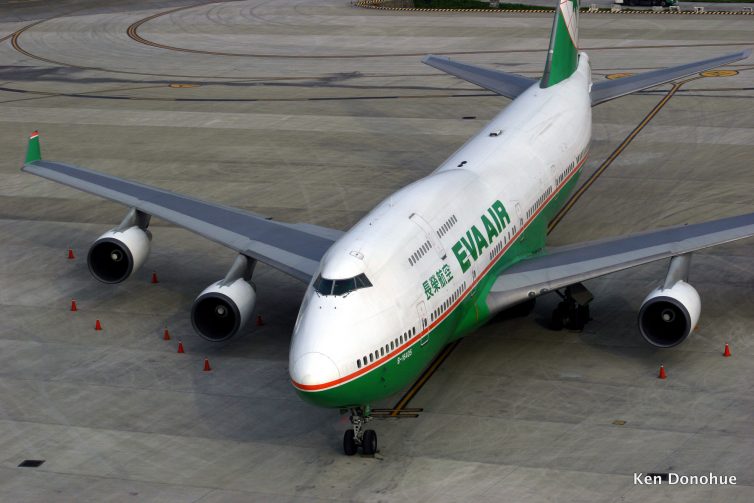
EVA Air Boeing 747-400
There is little question that the Boeing 747 is the most beautiful aircraft ever built. It’s in a class of its own. There’s a reason it’s called the Queen of the Skies.
While some modifications (just a few) have been made since the first one took to the skies in 1969, its design is timeless. From the pointed nose that rises gracefully up to the cockpit windows and that distinctive hump.
For decades, it was the undisputed leader in wide-body aircraft. With more than 1,500 ordered, airlines that flew the 747 gained instant credibility and cachet. Bigger isn’t always better, and while the Airbus A380 may be the biggest commercial airplane, it has nothing on the 747’s style and panache. The 747 is a glamorous runway model that turns heads wherever it goes – the way it struts confidently through airports around the globe. And nose onrotating off the runwayit’s a thing of beauty.
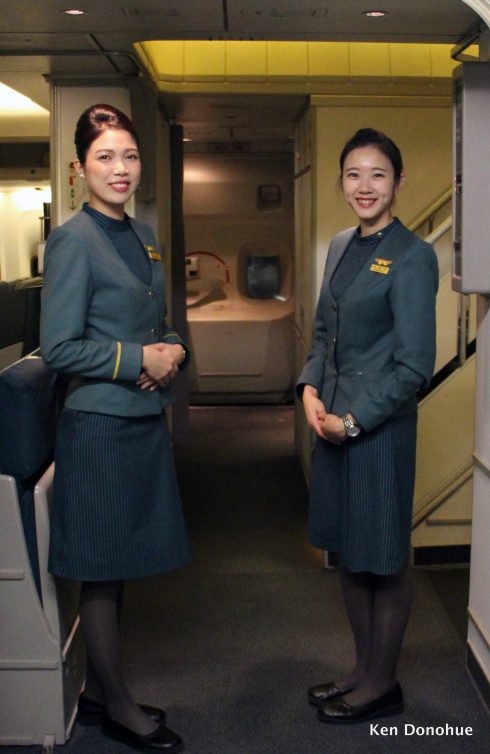
Flight attendants welcome me onboard
All good things must end, and so it is that the 747 is in its twilight yearseclipsed by the more efficient Boeing 777, bigger Airbus A380, and fuel-sipping Boeing 787/Airbus A350. With only 41 Boeing 747-8Is ordered, the writing’s on the wall. And in the coming decade, we will see fewer and fewer Boeing 747s. But there are still some airports where you can see the Queen, and take one last flight. Such is the case with my home airport in Vancouver (YVR), where EVA, China Airlines, Lufthansa, British Airways, and Qantas still have passenger operations with the type. Albeit, the latter three operate the aircraft only seasonally. This past year, BA began using the Airbus A380 in summer months, but reverts to the 747 in the winter months. Lufthansa is now the only carrier operating daily 747 passenger service to Vancouver.
AirlineReporter recently experienced EVA Air’s Boeing 747 service on the Vancouver-Taipei-Vancouver sector. The 747 once made up the bulk of EVA’s long-haul fleet. It was the aircraft the Taiwanese airline used on its first flight to North America, when it inaugurated service to Los Angeles in December, 1992. Like many airlines, EVA has been replacing its 747s with Boeing 777s, which now do most of the airline’s long-haul flying. In fact, the airline now only has three passenger 747s left in its fleet, and Vancouver is one of the few destinations to which EVA uses the aircraft. EVA executives recently told me that 747 will no longer fly the Vancouver route by July 2017, and will be completely retired from the airline’s fleet by September of next year.
If you tallied up the number of flight reviews on this site, you will notice that the majority of them are for business and first class. It turns out that premium cabins are just more interesting than economy, with all the fancy lie-flat suites, and butler service in your private bedroom. More often than not, economy is, well….boring. But sometimes it can be pretty exciting — depending on what kind of plane you are flying.
That’s the position I found myself in recently when I flew back to the 1990s on board KLM’s Fokker 70 and Boeing 747-400 “combi.” Both aircraft types have become exceedingly rare, and I jumped at a chance to fly them between Hamburg, Germany and New York, via Amsterdam.
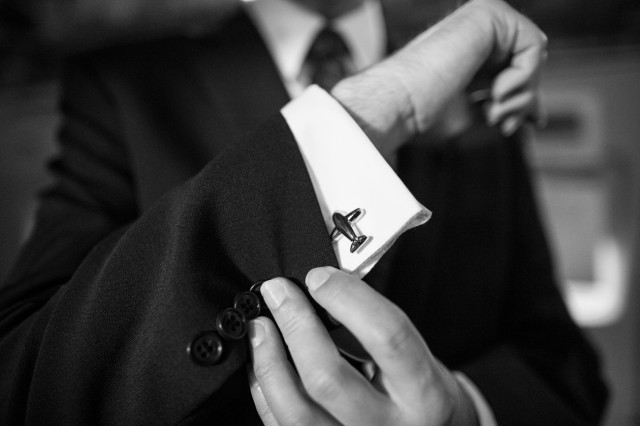
The right cuff-links for the occasion – Photo: Jeremy Dwyer-Lindgren | JDLMultimedia.com
When I moved to the USA in May of 2012, I packed up my entire life, left everything and everyone behind in Australia, and began a new life in Seattle. Pretty soon I was meeting up with all kinds of people, especially AvGeeks but even I didn’t think that less than two and a half years later I would be getting married.
It wasn’t just any wedding though, it was probably the most unique AvGeek wedding. How so? Well, my wife and I were married inside the very first 747 – the City of Everett locate at the Museum of Flight.
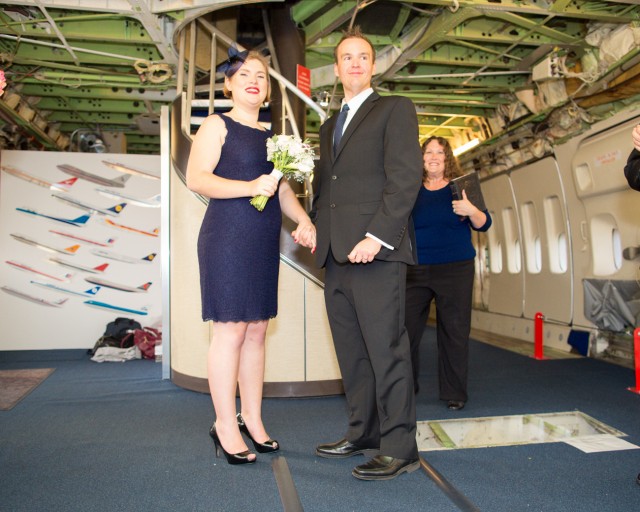
That’s me and my new wife Heidi, posing for our first photos as a married couple inside RA001, Photo: Jeremy Dwyer-Lindgren | JDLMultimedia.com
Yeah, you read that right, the first 747. Truth be told, I couldn’t believe at first that the Museum of Flight would let us use the first 747 (also known as RA001) like that. But we were extremely excited. Right now, you are probably thinking about my wife, “She let you do that?”. Well, the truth of the situation is that it was Heidi’s idea.
After trying to find intimate venues for a small wedding at low-to-zero cost, we just couldn’t find any. Parks in Seattle all require a permit to get married. These can cost anywhere from $200-400. Pass!
We spoke with our friends at the Future of Flight in Everett about perhaps getting married there; however, Heidi’s family are all based south of Seattle, so this would be a long way to go for them (unfortunately, my family was not able to make it over for the wedding).
I knew that the Museum of Flight had just finished refurbishing RA001 so I joked that we should just get married under it. My wife, being ever the smart one in our relationship, made a good point that it rains a lot in October – what would we do if it rained that day? Her idea was we get married inside. This excited her more than me, and I’m the AvGeek!
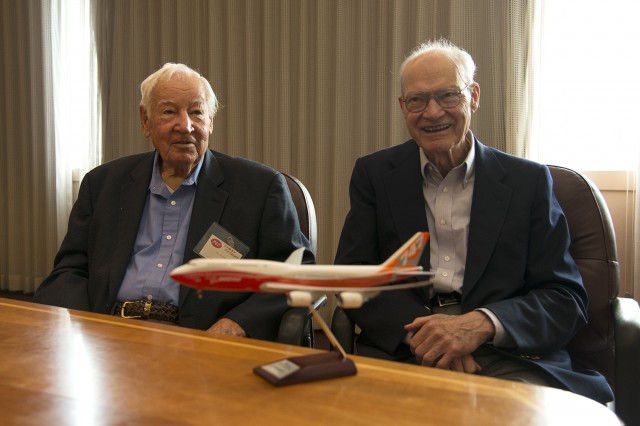
Joe Sutter and Brien Wylge – Photo: Kris Hull
Recently, the Museum of Flight in Seattle finished the first phase of restoring the historic first 747 to its original 1969 appearance. To celebrate this accomplishment, they hosted an afternoon seminar with Joe Sutter, who led the engineering team and is credited as the “Father of the 747”, Brien Wygle, the former Boeing Chief Pilot in 1969 who was in the right seat during the first flight, and noted author Clive Irving, who wrote one of the authoritative books on the 747. Before the main events on October 18th, we had the opportunity to sit down and talk with Sutter, Wygle, and Irving.
The 747 was an aircraft that was developed quickly by today’s standards, according to Sutter. “I was asked to investigate large aircraft designs in April 1965, Pan Am placed its first order in 1966, and we rolled out the first aircraft in 1968, with first flight in 1969, followed by entry into service in early 1970.” For an aircraft the size of the 747, three years from initial concept to rollout of the first model is still today unprecedented.
According to Irving, “It was a large program, and Joe was in the middle of the chain of command, and whenever there was a critical decision to be made, and no one else wanted to make it, Joe made it. He was the one in the end who signed off on everything, and took full responsibility.
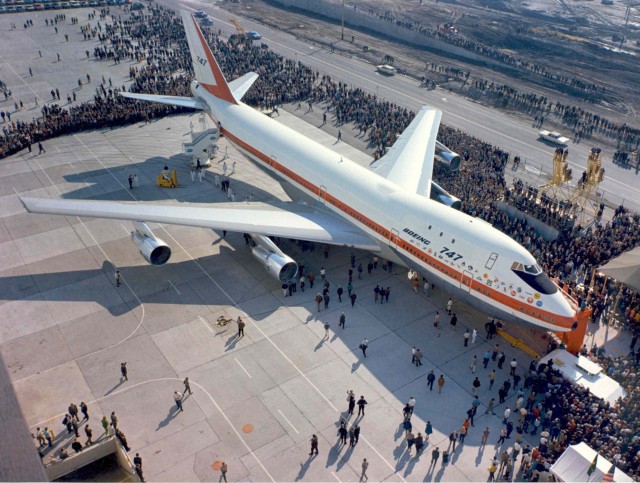
Roll out of RA001, the first 747 – Photo: Boeing
You will not find that speed in today’s environment.”It was a massive undertaking, and at one point, we were spending $5 million a day on the project. I was directed to cut 1,000 engineers by leadership, and I polled my crew and asked what they can do without; they said, ‘nothing, we need 800 additional engineers!'” said Sutter. “We were relegated to an old warehouse on the Duwamish River before the Everett factory was built, while the team heading up the government-sponsored SST program were housed in brand-new offices and buildings.”
When asked about how he felt being “relegated to a side project” compared to the high-profile SST program, Sutter replied, “We had a job to do, and we were going to build an airplane that did that job. We were going to get our job done, and we had the attitude that if we did a good job, the plane would have a great future.”
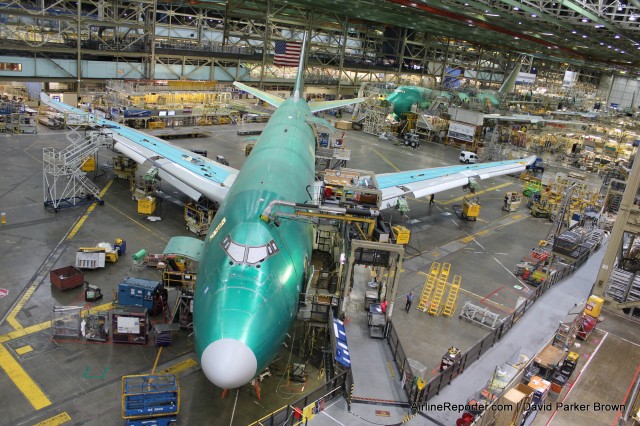
The money shot: 747 line inside the Boeing factory
Back in the 1960s Boeing made a big gamble. They decided to build the world’s largest airliner, the Boeing 747 Jumbo Jet. To build such a beast, they would need a large facility. After careful consideration, Boeing decided to build a large factory in Everett.
Since the first 747 rolled off the line in 1968, every other 747 has been built under the same roof. Even today, the 747-8 is built in the same factory.
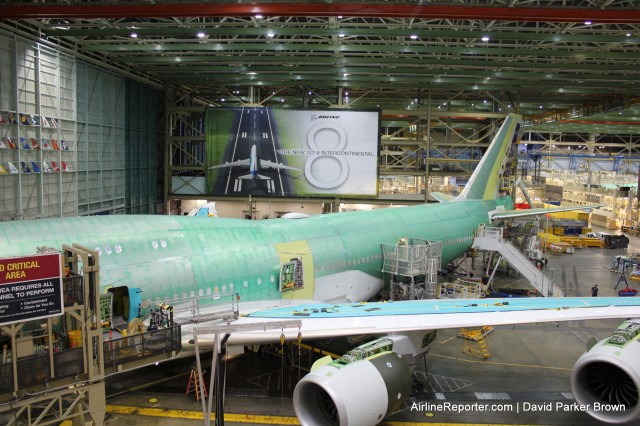
In case you didn’t know the aircraft type, there is a large sign on the wall.
Although Boeing offers public tours of the facility, they do not allow cameras. I was lucky enough to participate in a media event and take photos of the 747 line in the factory and I wanted to be able to share. Enjoy…


